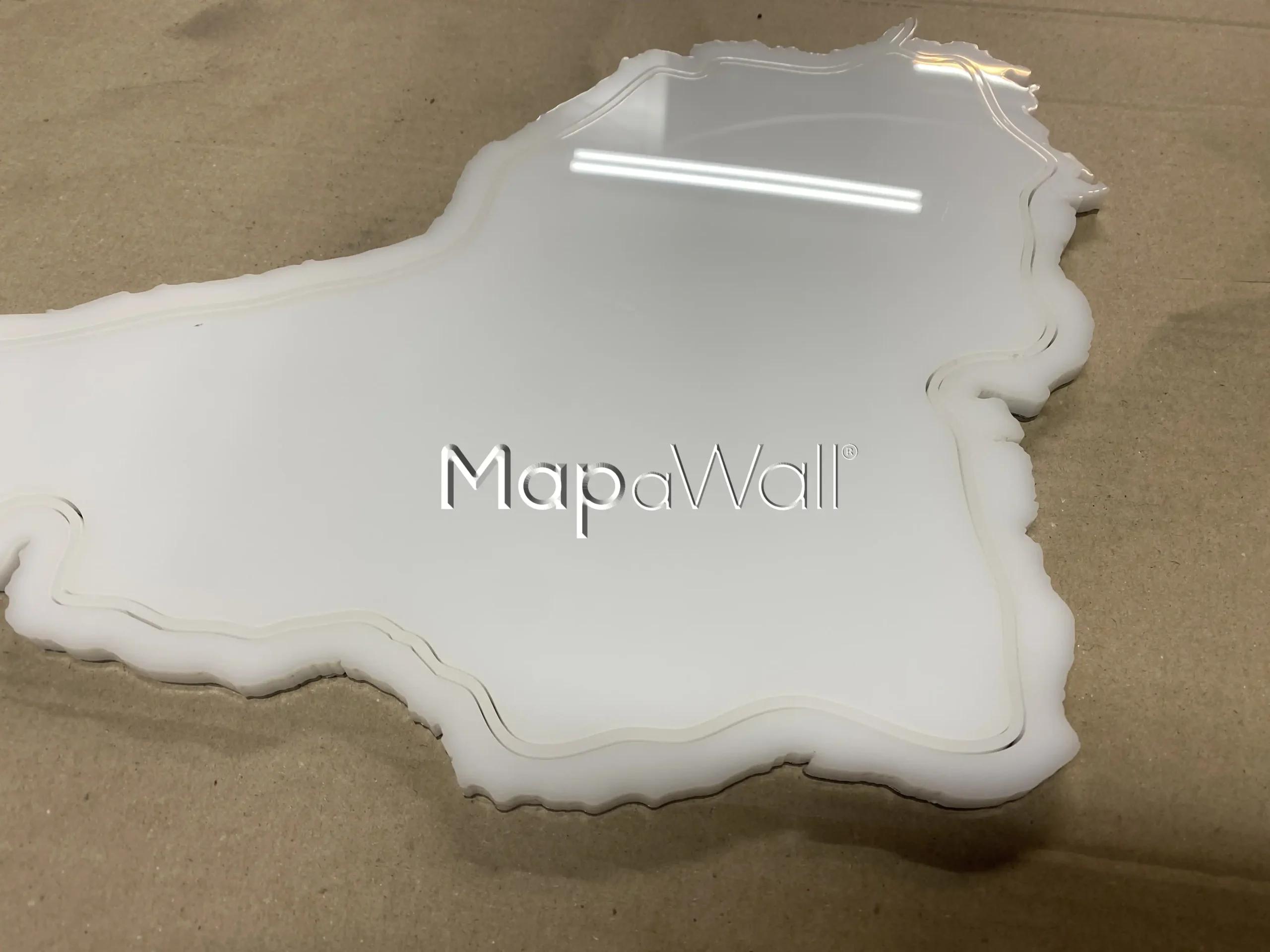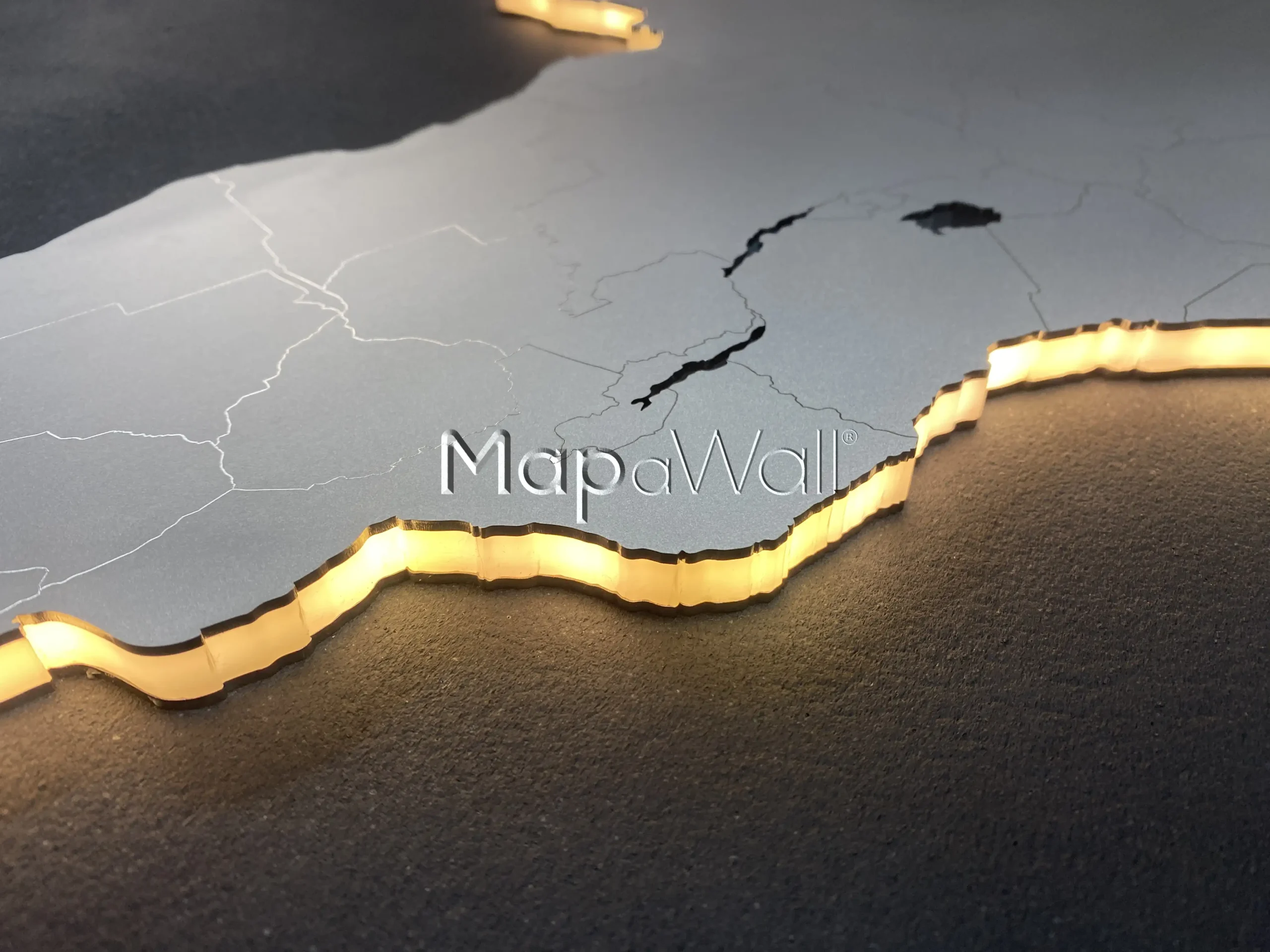Tag: LED strings
-

The crafting process (part 2)
As demonstrated in the initial phase of crafting this illuminated stainless steel world map, our process started with cutting the base layer from a corten steel plate using our fiber laser. Subsequently, our steel supplier prepared the stainless steel for cutting. Once the top layer was cut and engraved, we proceeded to work on the…
-

Warm and cold diffused LED
In the previous post we explained how the illuminated stainless steel world maps are crafted and how they are set up in order to spread this beautiful diffused light. In this post we will have a closer look in the difference between warm and cold white. Suitable LED-strings As you might know, all sorts of…